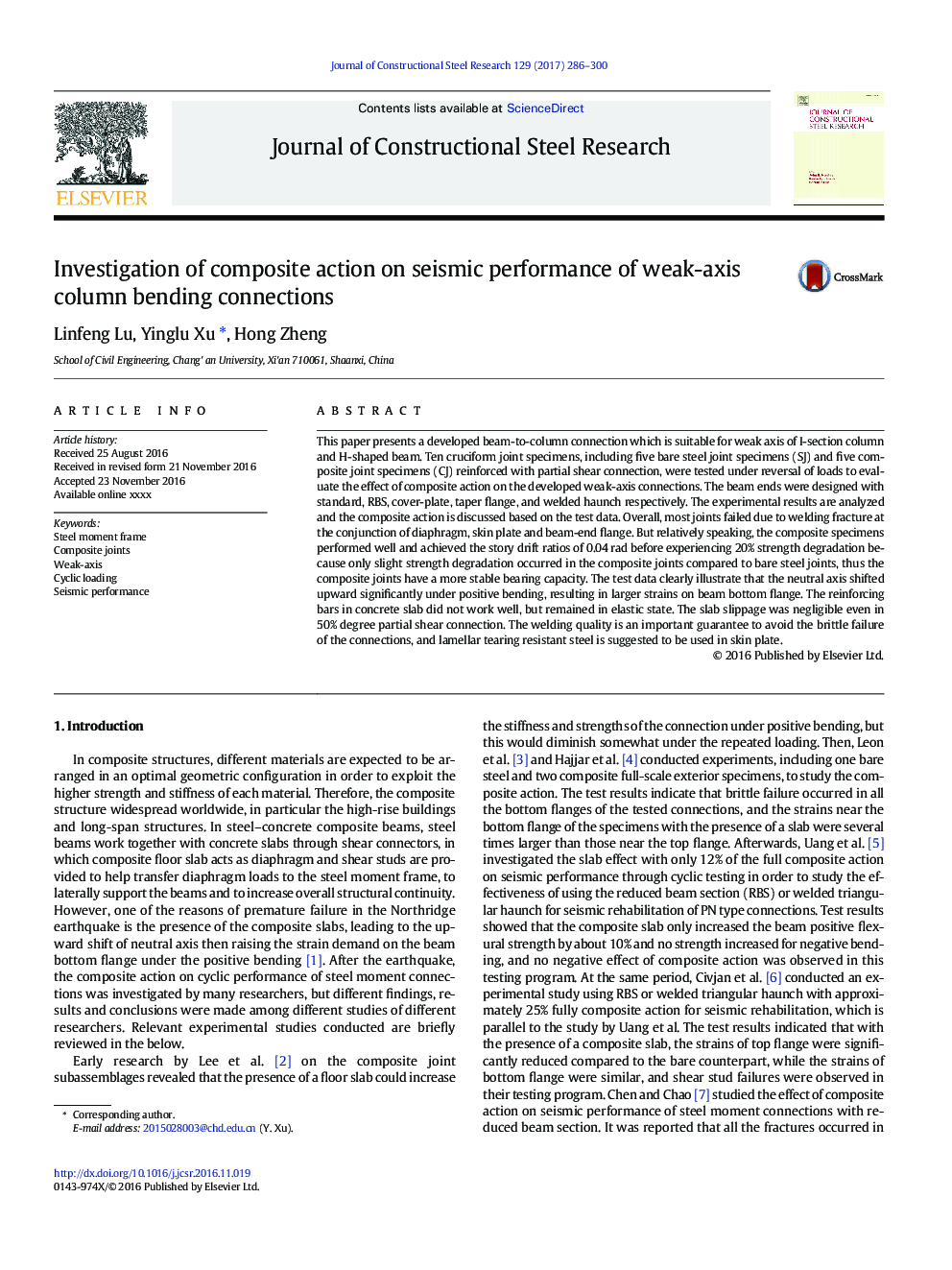| Article ID | Journal | Published Year | Pages | File Type |
|---|---|---|---|---|
| 4923568 | Journal of Constructional Steel Research | 2017 | 15 Pages |
Abstract
This paper presents a developed beam-to-column connection which is suitable for weak axis of I-section column and H-shaped beam. Ten cruciform joint specimens, including five bare steel joint specimens (SJ) and five composite joint specimens (CJ) reinforced with partial shear connection, were tested under reversal of loads to evaluate the effect of composite action on the developed weak-axis connections. The beam ends were designed with standard, RBS, cover-plate, taper flange, and welded haunch respectively. The experimental results are analyzed and the composite action is discussed based on the test data. Overall, most joints failed due to welding fracture at the conjunction of diaphragm, skin plate and beam-end flange. But relatively speaking, the composite specimens performed well and achieved the story drift ratios of 0.04Â rad before experiencing 20% strength degradation because only slight strength degradation occurred in the composite joints compared to bare steel joints, thus the composite joints have a more stable bearing capacity. The test data clearly illustrate that the neutral axis shifted upward significantly under positive bending, resulting in larger strains on beam bottom flange. The reinforcing bars in concrete slab did not work well, but remained in elastic state. The slab slippage was negligible even in 50% degree partial shear connection. The welding quality is an important guarantee to avoid the brittle failure of the connections, and lamellar tearing resistant steel is suggested to be used in skin plate.
Related Topics
Physical Sciences and Engineering
Engineering
Civil and Structural Engineering
Authors
Linfeng Lu, Yinglu Xu, Hong Zheng,
